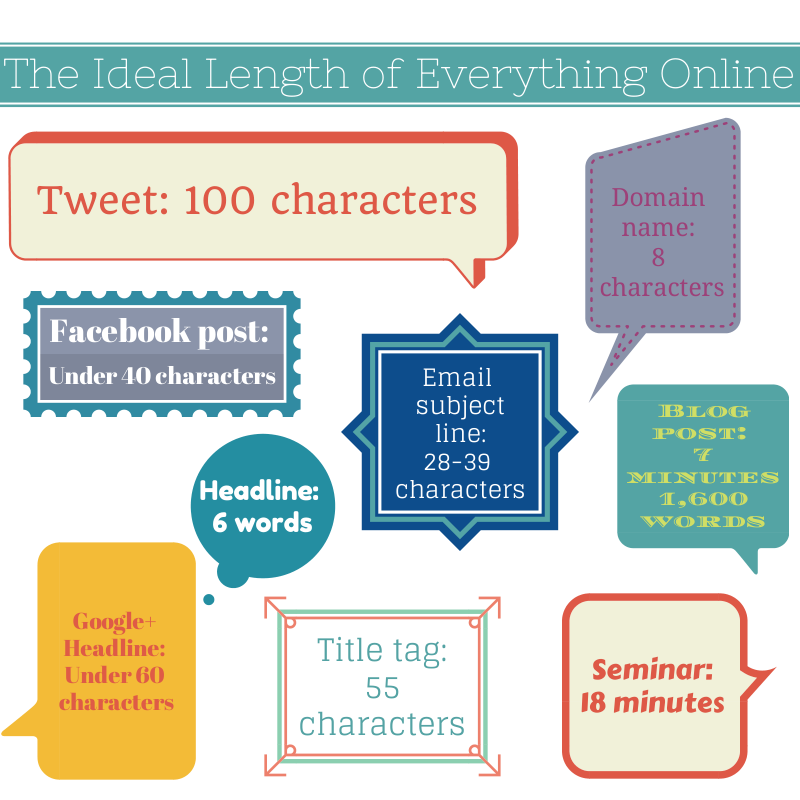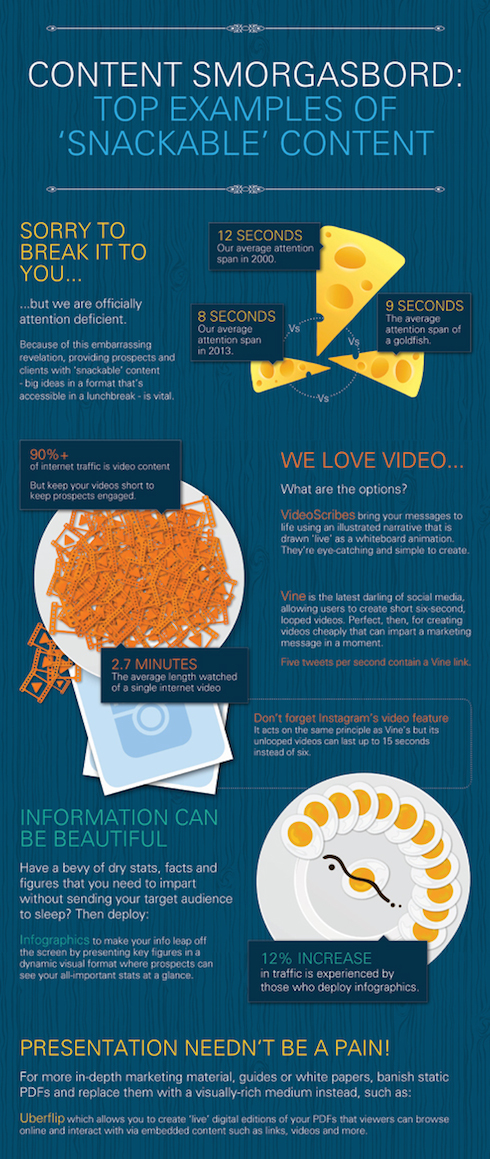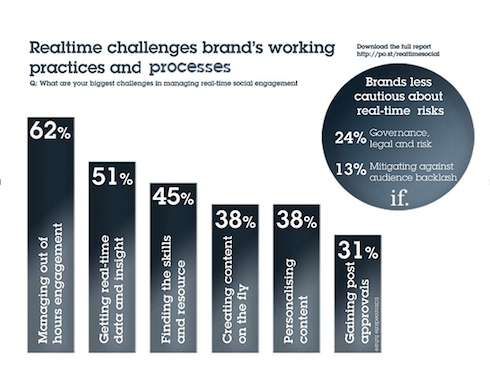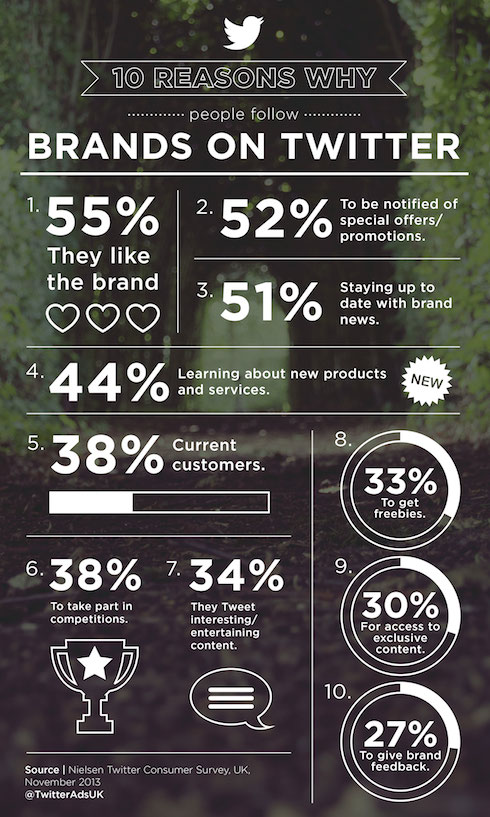By Liam Dowd - April 1st, 2014
Real-time social engagement, the power of snackable content and who follows your brand on Twitter?
Snackable content is king!
What is the best length for a blog post to ensure it has maximum engagement with its intended audience? According to Medium the answer is seven minutes. In their testing the blog posts did include images, which bought the total word count down to around 1,000 words, which seems to be the optimum for this kind of material.
For social media content, getting the length right is also vitally important to ensure high levels of engagement are achieved. There has been a great deal of research published, which concluded:
Optimal tweet length is 100 characters.
Optimal Facebook post is 40 characters.
Optimal Google+ headline is 60 characters.
With consumers continuing to be time poor, they will only engage with content that is relevant to them. This research of course is only a guide and exceptions can always be made across all social media channels. However, it is surprising how brief content needs to be in order to be optimised for maximum engagement.
With attention spans decreasing at an alarming rate, corporations embarking on content marketing campaigns need to be fast to digest if they are to be paid attention to – and more importantly – their calls to action acted upon.
Adapting to real-time social engagement
“The rapid uptake of mobile has made real- time social engagement an essential part of managing communications with your audiences. How are brands adapting to the new requirement for creative skills, resources, and agile processes?
“There is much discussion across the industry media as to whether real-time social engagement is the future, or just a fad. What our research shows is that regardless of the debate, the majority of brands are either practicing real-time social engagement or planning to. The survey reveals some interesting insights into the operations, processes, skills and tools used to make real-time work within organisations,” says the new report from Immediate Future.
Corporations understand that social media is a powerful force if it can be harnessed. This research clearly illustrates that developing more real-time interactions across the social media platforms results in closer customer relationships.
What is clear is that the development of more real-time social media marketing is inevitable. However, brands need to clearly understand the components that make up these campaigns and have the personnel and skills ready to interpret and learn from these timely interactions.
LinkedIn launches Content Marketing Score
The use of content marketing continues to grow, but if your corporation doesn’t have a metric to measure its success, the time, energy and cost associated with creating engaging content will be wasted.
LinkedIn has continues to evolve its services and has now launched its own content marketing tracking platform. The new metric measures member engagement with your Sponsored Updates, Company Pages, LinkedIn Groups, employee updates, and Influencer posts (if applicable). It then gives you a single score, ranked against your competitive set. You will also get recommendations about how to improve your score based on different levers you can pull to give you more reach, frequency and engagement. You can filter your score by region, seniority, company size, job function, and industry.
By tracking performance on a monthly basis, you get a powerful snapshot on how well you are engaging with your audience over time. With this knowledge, you’ll be empowered to upgrade your strategy to optimize engagement within your target.
Also announced is Trending Content, a ranking of topics that resonate with LinkedIn members. Whether it’s topics about leadership or entrepreneurship, cloud computing, or mobile devices, you can see which topics matter to your target audience, and which members are engaging with the most content on any given subject.
Why do they follow?
The reasons why consumers follow brands can be manifold, but understanding these motivations is a metric that can reveal volumes about these brand advocates. A new infographic focuses on Twitter and gives some insight into the key drivers behind the network’s success.
Until next time….
The Useful Social Media team.
Next Reads
June 2014, New York
Become a social business: For superior marketing response, sharper corporate decision-making, enhanced innovation and a happier, more loyal customer
Brochure Programme



